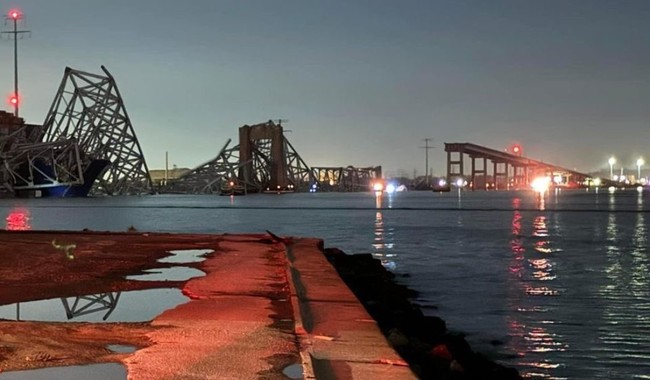Top News
The Baltimore Bridge Lawsuits Are Already Starting

I suppose this was inevitable. From the moment that the Francis Scott Key Bridge was struck by a barge and collapsed last month, it was a safe bet that there were already lawyers circling the wreckage like sharks in the bay. The first lawsuits to arise from the catastrophe are already in their formative stages, but they aren’t coming from the families of the six workers who were tragically killed during the collapse. They’re coming from the city of Baltimore, with Mayor Brandon Scott announcing today that the city had retained legal counsel from two firms specializing in personal injury and civil rights litigation. And all of this is happening before the investigation into the cause of the collision is even complete. (Baltimore Sun)
Baltimore Mayor Brandon Scott said Monday the city had hired attorneys to pursue legal action against the operators of the cargo vessel that struck and toppled the Francis Scott Key Bridge last month, the same day the FBI confirmed it had opened a criminal probe.
In a statement, Scott said the city had hired Philadelphia law firm Saltz Mongeluzzi Bendesky, which specializes in personal injury suits, and DiCello Levitt, a Washington, D.C.-based firm that specializes in civil and human rights litigation and commercial, environmental, and class-action lawsuits. Sara Gross, the city Office of Law’s chief of affirmative litigation, will also be a part of the legal team.
Six construction workers died in the March 26 incident, which temporarily shut much of the Port of Baltimore, idling 15,000 port workers and impacting nearby businesses. Authorities have since begun salvaging the ship, which remains stalled in the Patapsco River, weighed down by parts of the structure.
The owners of the ship, the Dali, are Grace Ocean Private Limited and a few of their partners. There’s no question that they have some liability in the wreck and they undoubtedly carry mandatory insurance to help cover damages from incidents like this. But how far does that liability go if there is no suggestion that they crashed the ship into the bridge intentionally? That would be a preposterous claim to make, particularly when they declared that they were experiencing navigational issues before the Dali struck the bridge’s support structure.
I suppose a case could be made that there is some sort of wrongful death claim available to the families of the workers who were killed. But even then, it seems as if some sort of negligence or neglect would need to be demonstrated. That’s why the results of a full investigation are required. Something clearly went disastrously wrong, but we don’t yet know if it was driven by some type of unforeseeable mechanical failure or if human error was a contributing factor. If the latter, then a better case might be made for wrongful death.
None of that is what the Mayor appears to be talking about, however. Brandon Scott is describing a need to “hold the wrongdoers responsible and to mitigate the immediate and long-term harm caused to Baltimore City residents.” Using the term “wrongdoers” once again suggests direct actions leading to the harm that was caused. Also, aside from the six workers on the bridge, who are these Baltimore City residents suffering immediate and long-term harm? You might argue that the city will suffer economic harm from the closure of the port due to job losses, but that seems like a bit of a stretch.
Another angle has emerged that might provide a bit more fodder for a lawsuit, however. It’s being claimed that the workers were not warned of the approach of the Dali.
Attorneys for the families of two Francis Scott Key Bridge collapse victims and a survivor say workers received “no warning” before the container ship Dali struck the bridge.
L. Chris Stewart and Justin Miller of Atlanta-based Stewart Miller Simmons Trial Attorneys and Daniel Rose and Kevin Mahoney of Kreindler & Kreindler in New York are representing the families of victims’ Alejandro Hernandez Fuentes and José Mynor López as well as survivor Julio Cervantes.
If true, that might point to some possible culpability, but more questions have arisen. First, construction crews were able to stop the flow of traffic onto the bridge before the ship struck. That move is credited with potentially saving many lives, but it also shows that someone knew the ship was approaching and danger was imminent. The crew of the ship had to have warned them, but they would only have been able to contact the local transport officials. They would have no way of directly warning the men working on the deck of the bridge, so the fault for a lack of warning almost certainly lies elsewhere.
It’s going to turn into a legal mess, obviously. It’s just a bit surprising that it’s moving forward so quickly while there is still information being gathered. Perhaps those steps should have been addressed before dragging the lawyers into the mix.
Read the full article here


















